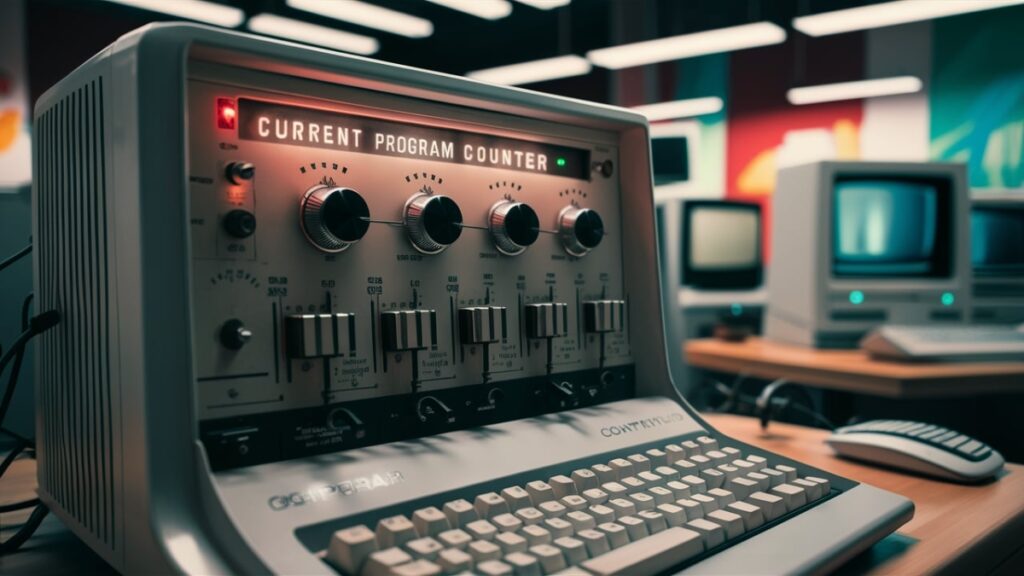Program counter, also known as PC, is a significant part of computer architecture. It is responsible for providing the sequence through which the instructions are executed. This article focuses on the program counter’s importance in current computing systems and its actions.
What is a program counter?
The program counter is another register inside a CPU that holds the physical address of the next instruction to be executed. It also increments as the CPU manipulates instructions, granting an efficient flow of operations. Its main task is to remember the order of execution so that the CPU can find the next instruction.
Functionality and Importance
The functionality of the program counter is very important in the functionality of the CPU. Every time an instruction is fetched from memory, its program control changes by a fixed number of bytes, often the size of the sought instruction. This automatic increment assists in the proper sequencing of the given instructions as well as in the determination of the last rendered instruction. Furthermore, it is involved in controlling the flow of control. It offers jumps, loops, and branching due to adjustment of the counter with the new address to import non-sequential code. Therefore, it is used for implementing different program logic, which is complex in the given case.
Program Counter and Instruction Cycle
program instruction cycle, also known as instruction cycle, refers to the cycle followed in the computer architecture and includes the fetch, decode, execute and store phases. This component is very much used in the fetch stage of the instruction cycle, where it provides the memory unit with the address of the next instruction to be fetched. This process goes on repeatedly, and in this way, the CPU executes many millions of instructions per second. The cycle starts when the program counterpoints at the current instruction being executed. After the end of the fetch stage, the counter is incremented so as to point at the next instruction. Such a transition is therefore unique and allows the efficient and accurate processing of applications.
Impact on Performance
The program counter has a severe effect on the performance of a computer system. An efficient counter is one which makes sure that instructions are being retrieved and executed in a timely manner. But herein, performance can be influenced by branch instructions that change the program through the program counter. Forecasting these branches is important in order to ensure that performance is as good as possible. Simpler branch prediction methods are used in all current microprocessors to mitigate the effects common with branching, including performance degradation. This is informed by the fact that in anticipating the result of branch instructions, the OFS, and thus the CPU, can pre-fetch instructions to minimise latencies and maximise throughput.
The Program Counter in Modern CPUs
In contemporary CPUs, much has been done to improve the program counter in order to cater for the challenging operations in computing. Some advanced architectures may contain several program counters, such as multi-threading and pipeline architectures. The improvements make it possible for the CPU to work on many instructions concurrently, thus making it efficient. Furthermore, contemporary microprocessors may or may not contain program counter registers for every single core or thread of processing. This design optimises the use of resources, and it is possible to perform various types of workloads in this design.
FAQ’s
1. What is the primary function of a program counter in a CPU?
The primary role of a program counter in a CPU is to store the memory location of the next instruction to be fetched from memory. It makes sure that the CPU gets and executes instructions in proper order and no jump or branch instruction bypasses any important instruction to be executed. PC increases its value by some number each time an instruction is fetched for execution and this enables the CPU to easily execute instructions without interruption.
2. How does the program counter-affect the control flow of a program?
As for the flow control of a program, information related to branching, jumping, and looping instructions is reflected by changing the value of the it. These instructions may allow on changing the address stored at the program counter and thus allow the CPU to run non-successive code, helping it implement complex program logic.
3. Why is the program counter-important for the instruction cycle?
The program counter is useful in a computer’s instruction cycle because it holds information about the next instruction to be fetched from memory. At the fetch stage of the cycle, it also makes certain that the instructions are being brought in the right order so that the CPU can decode, execute, and store the results properly. This is a fundamental cycle that goes on continuously in the CPU’s operation.
4. How do modern CPUs enhance the functionality of the program counter?
Advanced features such as multithreading and pipeline processing also further it’s role on modern CPUs. Such CPUs may also incorporate a plurality of program counters so that the units can concurrently process the sequence of instructions, which increases the rationality and velocity of the operations. Furthermore, fundamental changes of control flow cause delays that are addressed by modern CPUs employing various branch prediction methods.
Conclusion: The Backbone of Instruction Execution
Hence, the major conclusion to be drawn about the program counter is the fact that this is a critical part of computer architecture in the quest to guarantee orderliness in the execution progress of instructions to be fulfilled by the computer. This work shows that its function of managing control flow, instruction cycle implementation, and performance boosting is more than essential. With the evolution of computing technology, the program counter, too, has a higher standing within the computer systems and subsequent CPUs. Knowledge of the role it plays and its importance is beneficial for realising how computing systems are constructed and organized—the intricate gears of today’s world-wide web.

